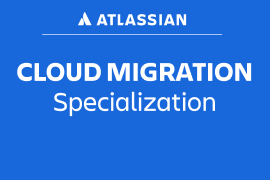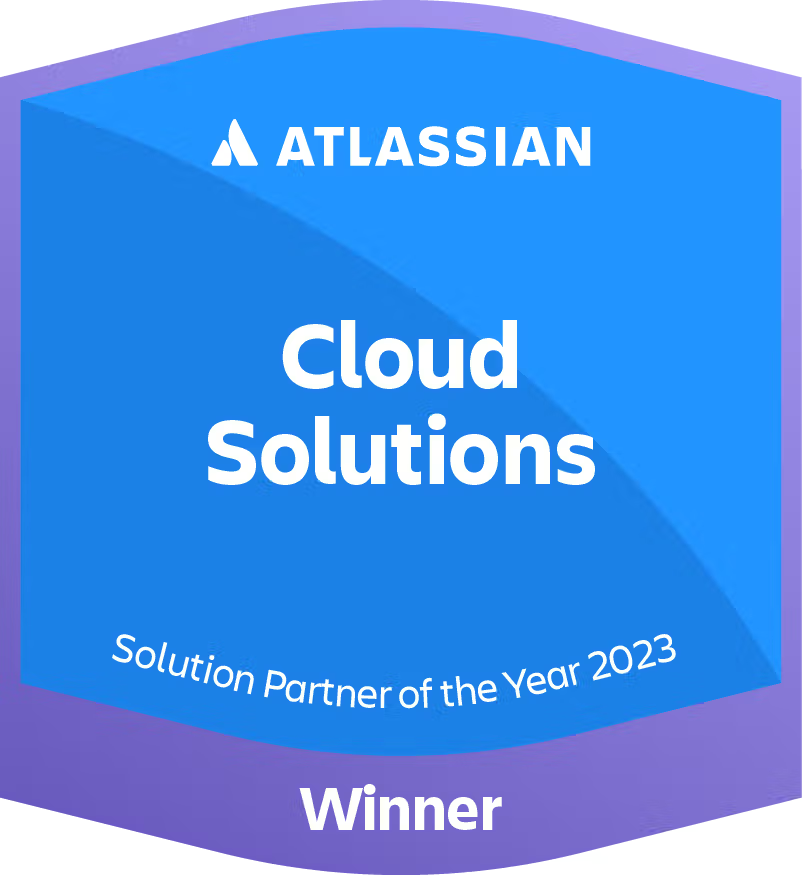Transform with cloud
Accelerate digital transformation through cloud technology to become more agile and increase innovation across your organisation.
Looking to migrate from Atlassian Data Center to Cloud? Find out more about how FastShift Complete transforms your journey to Atlassian Cloud for maximum value.

As companies scale, maintaining efficiency and agility is essential for staying competitive.
By migrating your applications and infrastructure to the cloud, you can benefit from reduced costs, improved agility, elasticity, and flexibility.
With a defined and tailored cloud strategy, you can harness the power of your software, providing seamless integration between teams and tools, and benefit from modern features such as AI and automation.
Complete your journey to Atlassian Cloud with FastShift Complete – find out more.
Our cloud solutions

FastShift Complete: Atlassian Cloud transformation

On-premise to cloud migrations

Cloud consulting and optimisation

Cloud security services

Cloud hosting

Managed services

DevOps

Cloud software licences
The benefits of cloud solutions

Cost savings
Reduced total cost of ownership

Increased business agility and flexibility
Deliver work faster and more effectively

Accelerated innovation
Utilise time-saving and idea-inspiring features

Improved operational efficiency
Collaborate better across global teams

Streamlined IT infrastructure
Easily access and integrate the tools you rely on

Improved global scalability and demand management
Scale your infrastructure as required
Consolidate and integrate
Consolidate and integrate
Consolidate your cloud instances, and integrate your essential cloud tools to streamline your processes.

Consulting
Consulting
Maximise the benefits of the cloud with end-to-end consulting. Optimise your software through automation, tool set-up and configuration, integrations, and more.

Cloud hosting
Cloud hosting
Remove the burden of managing server equipment in-house to increase flexibility and adapt quickly to business changes.

Managed services
Managed services
Pass technology management to our expert engineers. Outsource back-end infrastructure management, support, and even administration of your cloud-based services.

DevOps
DevOps
Designed for agility and flexibility, the cloud provides centralised deployment tools and can support built-in DevOps.

Cloud software licences
Cloud software licences
Get more value from your software with tailored licensing solutions. Take the stress out of managing tools and ensure you get the best deal.

Training
Training
Discover our comprehensive training. Designed to equip you with the essential skills needed for a seamless transition to the cloud, enabling you to manage your projects efficiently.

Cloud transformation and migration
Move your tools to the cloud, as a Software as a Service (SaaS) platform such as migrating from Atlassian Data Center to Cloud with FastShift Complete, or hosting using public cloud like Amazon Web Services (AWS).

Consolidate and integrate
Consolidate your cloud instances, and integrate your essential cloud tools to streamline your processes.

Consulting
Maximise the benefits of the cloud with end-to-end consulting. Optimise your software through automation, tool set-up and configuration, integrations, and more.

Cloud hosting
Remove the burden of managing server equipment in-house to increase flexibility and adapt quickly to business changes.

Managed services
Pass technology management to our expert engineers. Outsource back-end infrastructure management, support, and even administration of your cloud-based services.

DevOps
Designed for agility and flexibility, the cloud provides centralised deployment tools and can support built-in DevOps.

Cloud software licences
Get more value from your software with tailored licensing solutions. Take the stress out of managing tools and ensure you get the best deal.

Training
Discover our comprehensive training. Designed to equip you with the essential skills needed for a seamless transition to the cloud, enabling you to manage your projects efficiently.

Cloud technology partners







The FastShift Complete journey to Atlassian Cloud
Complete your journey from Data Center to Atlassian Cloud with FastShift Complete.
We partner with Atlassian's FastShift programme to accelerate the timeline of your data migration, and complete your transformation journey with Marketplace app support, integrations, and benefits realisation such as optimising for Atlassian Rovo AI.
Migrating and containerising with AWS
Helping a non-profit music and video gaming festival migrate to AWS native capabilities.

From strategy through to execution, Adaptavist have provided a crucial consultancy for our 10,000-user Atlassian Cloud migration.
They helped us understand what challenges we had and how to go about overcoming them, and helped us design and build our environments. They are playing a key part in our migration efforts, and also deliver an important managed service hybrid component.
Tom W. and Chris F.
Arm Holdings
Our cloud expertise






Get the most out of cloud technology with our resources

Blog: 9 steps to build a successful cloud migration plan
Advice to successfully plan and implement your cloud migration.

eBook: Playbook to cloud migration success
Taking the first steps with your Atlassian Cloud migration.

Blog: Optimising AWS cloud investment: top tips
Exploring the key factors to maximise your investment in AWS cloud.

Blog: The value of Adaptavist Managed Services
A team of experienced specialists looking after your vital business functions.